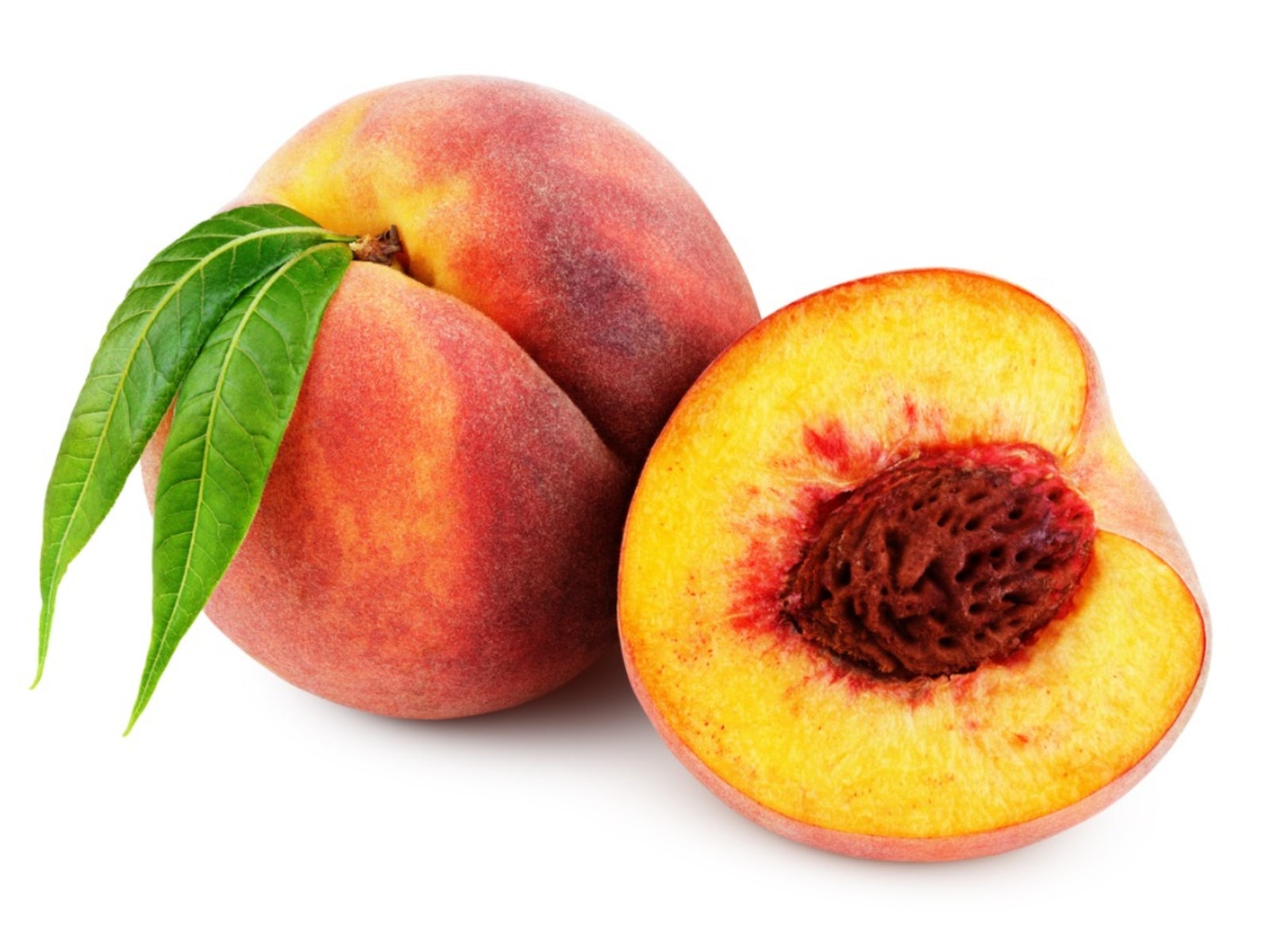
Introduction:
Peach is a popular stone fruit grown in warm temperate and sub-tropical climates. It is widely cultivated due to its attractive color, excellent quality, and taste. Major peach-growing regions include Europe, North America, South Africa, Asia, and Australia. Nectarines are smooth-skin mutants of peaches, smaller in size and non-pubescent.
Uses:
- Fresh consumption as a table fruit
- Canned, dried, frozen, juice, jam, and beverages
- Nutrient-rich and used as baby food
Nutritive Value:
- Total Soluble Solids (TSS): 8-13°B
- Total Sugars: 8%
- Ascorbic Acid: 6-13 mg
- Carotenoids:
- White flesh cultivars: 0.19-0.53%
- Yellow flesh cultivars: 0.75-0.79%
- Peach Kernel Composition:
- Fats: 39-55%
- Proteins: 23-30%
- Crude fiber: 14.8%
- Minerals: 2.7%
- Glycosides:
- Prunacin (Pulp)
- Amygdalin (Seeds)
Medicinal Properties:
- Peach kernel oil: Used in food, cosmetics, cattle feed, pharmaceuticals, and bio-fertilizers
- Flowers & Leaves: Used as a purgative, anthelmintic, and for treating urinary stones, kidney function issues, and indigestion
Origin & Distribution:
- Origin: China
- India: Uttar Pradesh, Jammu & Kashmir, Himachal Pradesh, Punjab, Nilgiris, and North-Eastern states (Arunachal Pradesh, Meghalaya, Manipur)
- P. behmi (a natural hybrid of almond and peach) is used as a rootstock for plum, peach, and almonds
- Nectarine: Prunus persica var. nucipersica
Morphology:
- Low-headed, wide-spread tree
- Drupe fruit with a superior ovary and velvety skin
Climate & Soil:
Climatic Factors:
- Limiting Factors: Low winter temperature, spring frost, hail storms, high humidity
- Chilling Hours: 7.2°C more effective
- Temperature:
- Below 2-3°C: Dormancy does not break
- High temperature in December-January leads to bloom abnormality and fruit set failure
- High winter temperature prolongs dormancy and increases chilling requirements
Soil Requirements:
- Mild to moderate steep hill slopes are ideal
- Avoid deep valleys due to water logging sensitivity
- Sandy soils with a depth of 7.0 m are ideal
- Oxygen supply is crucial; avoid compact soils with <10-20% pores
- Ideal pH: 5.8 to 6.8
Propagation:
- T-budding is commonly practiced (Autumn season preferred)
- Cuttings: Leafy succulent softwood and hardwood cuttings
- Peach Rootstock:
- Seeds from late cultivars preferred
- Removal of seed coat and GA3 treatment reduce stratification period
- Nematode attack common, but ‘Nenaguard’ and ‘Okinoura’ are resistant
Other Rootstocks:
- P. armeniaca (Apricot) – Root-knot nematode resistant
- P. amygdalis (Almond) – Dwarfing rootstock
- P. berseyi, P. tomentosa (Western Sand Cherry) – Dwarfing
- P. salicina (Nanking Cherry) – Medicinal value, produces large trees
- Micropropagation: Axillary shoots and embryo culture are successful
Planting:
- One-year-old plants preferred
- Spacing: 4-6 m in square system
- Spring planting is better than autumn planting
- Whitewash tree trunks to prevent sunburn
Training & Pruning:
Training Systems:
- Modified leader
- Open center
- V-shaped Tatura trellis
- Pillar
- High-density vase
- 2-scaffold vase (277-625 plants/ha)
- Belgium bench
For High-Density Planting (HDP):
- Hedge row: 519-889 plants/ha
- Tatura trellis: 666 plants/ha
- Meadow orchard: 13,333 plants/ha
Pruning:
- 1st year: Cut stem at 61 cm, allow 3-4 well-spaced branches
- 2nd year: Allow 2 well-spaced secondary branches per main branch
- Annual pruning: Maintain open center, remove diseased/criss-cross branches, stimulate new growth (41-61 cm)
Nutrition:
- Balanced Nutrition: FYM 40 kg/tree
- For Indian Conditions:
- N: 55-65 kg/ha
- P: 55-65 kg/ha
- K: 110-135 kg/ha
- NPK (g/year): 20:15:15
- Micronutrient Deficiency Correction:
- 0.5% ZnSO4
- 0.2% Boric acid
- 0.2% CuSO4
Irrigation & Intercropping:
- Critical soil moisture is required, especially at fruit maturity
- Shallow soils need frequent irrigation
- Intercropping: Cowpea, soybean, turmeric, pineapple
- Green Manuring: Short-duration legumes (e.g., sunhemp, daincha, beans)
Crop Regulation:
- Thinning: Improves fruit quality
- Ethrel (50-100 ppm): Increases fruit size and weight
- DNOC (1000-2500 ppm): Pre-bloom application effective
Physiological Disorders:
- Split Pit & Gumming: Caused by sudden rain after drought
- Sunscald: Exposure to direct sun; controlled by painting trunks
Harvest & Yield:
- Maturity: 78-127 days after flowering
- Indicators: Fruit size, firmness, pit discolouration, sugar:TSS ratio
- Yield: 7-10 t/ha (HDP: 78 t/ha)
- Growth retardants (Alar, Ethrel) enhance ripening and quality
Storage & Post-Harvest Management:
- Highly perishable (2-3 days)
- Pre-cooling reduces field heat
- Storage:
- Hydrocooling (10°C)
- 0°C with 85-90% RH (28-36 days)
- Controlled Atmosphere Storage (CAS) effective
- Storage Diseases: Brown rot, grey mold, whiskers rot
- Control: Radiation treatment, hot water dipping

